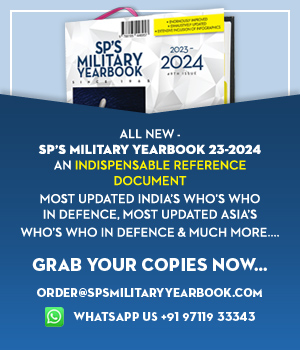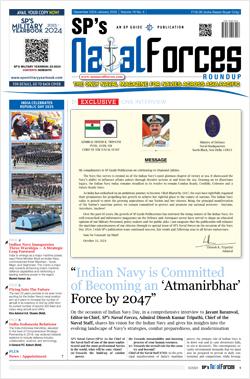INDIAN ARMED FORCES CHIEFS ON OUR RELENTLESS AND FOCUSED PUBLISHING EFFORTS

The insightful articles, inspiring narrations and analytical perspectives presented by the Editorial Team, establish an alluring connect with the reader. My compliments and best wishes to SP Guide Publications.

"Over the past 60 years, the growth of SP Guide Publications has mirrored the rising stature of Indian Navy. Its well-researched and informative magazines on Defence and Aerospace sector have served to shape an educated opinion of our military personnel, policy makers and the public alike. I wish SP's Publication team continued success, fair winds and following seas in all future endeavour!"

Since, its inception in 1964, SP Guide Publications has consistently demonstrated commitment to high-quality journalism in the aerospace and defence sectors, earning a well-deserved reputation as Asia's largest media house in this domain. I wish SP Guide Publications continued success in its pursuit of excellence.
- MoD initiates comprehensive review of Defence Acquisition Procedure 2020, pushes for defence reforms
- G7: The Swansong
- Kalinga Connect: South Asia to Polynesia
- Advanced MRSAM for India for a greater firepower
- Must Credit DRDO for Operation Sindoor, now what is next for defence R&D?
- Operation Sindoor | Day 2 DGMOs Briefing
- Operation Sindoor: Resolute yet Restrained
Landing Platform Docks
After a lapse of over a decade, MoD now has again revived the project to indigenously build 4 x LPDs for the Indian Navy
 |
The Author is Former Director General of Information Systems and A Special Forces Veteran, Indian Army |
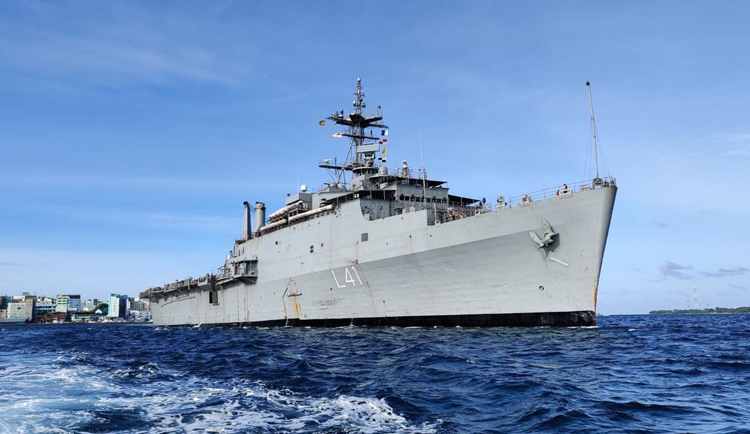
With increasing Chinese footprints in the Indo-Pacific, amphibious capability is essential. China illegally claims entire South China Sea (SCS) as its sovereign territory, has been practicing amphibious operations and has announced new maritime rules for foreign ships entering ‘Chinese Waters’ (sic) asking them to report details of carrying radioactive material, bulk oil, chemicals and host of other supplies. China has expansionist designs in the Indian Ocean with bases in Pakistan (Gwadar), Sri Lanka (Hambantota), Djibouti and plans to develop Kyaukphyu port in Myanmar. The number of Chinese vessels in these waters has also increased.
China’s new amphibious ships are its Yuzhao Type 071 amphibious ship and the Yushen-class Type 075 amphibious assault ship.
The Indian Navy (IN) currently operates one Landing Platform Dock (LPD), - INS ‘Jalashwa’ (former USS Trenton - Austin-Class LPD) procured from the United States in 2007. It also has few older class tank landing ships (LST) of various sizes and capabilities. Post Navy’s experience in the 2004, the Defence Acquisition Council (DAC) had approved construction of four LPDs in India.
Following the issue of a Request for Information (RFI) for LPDs under ‘Buy and Make (Indian)’ category, the L&T (in conjunction Navantia) had offered an LPD to the Indian Navy under ‘Make in India’ with transfer of technology (ToT) in July 2018. Earlier, three Indian firms (L&T, ABG and Reliance Defence) were selected but ABG and Reliance Defence had financial and building problems. Hence, the L&T offer became single-vendor situation which was not acceptable to the Ministry of Defence (MoD). Resultantly, the issue went into cold storage with the operational void continuing.
China’s indigenous amphibious aircraft AG600 ‘Kunlong’ has an operational range of 4,500 km and is reportedly designed to take off and land in two-metre high waves
China’s new amphibious ships are its Yuzhao Type 071 amphibious ship and the Yushen-class Type 075 amphibious assault ship. Presently China has 6 x Type 071. The Type 071 has an estimated displacement of more than 19,855 tonnes. China commissioned the lead ship of the Type 075 vessels, the ‘Hainan’, in April 2021. The Yushen-class can carry a large number of landing craft, troops, armored vehicles and helicopters and 900 troops. China plans 3 x Type 075 vessels. A Type 075A/Type 076 is likely to follow which could be equipped with electromagnetic catapults to enhance its ability to support fixed-wing aircraft.
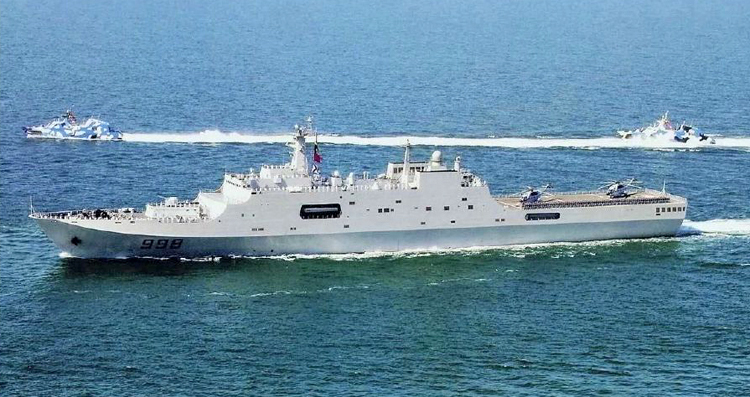
China’s indigenous amphibious aircraft AG600 ‘Kunlong’ has an operational range of 4,500 km and is reportedly designed to take off and land in two-metre high waves. The AG600 can carry 600 passengers. China is also importing 4 x Russian Beriev Be-200 Altair with each capable of carrying 72 passengers.
After a lapse of over a decade, MoD now has again revived the project to indigenously build 4 x LPDs for the Indian Navy after scrapping the offer by L&T becoming single-vendor. Now the Navy has issued a fresh RFI on August 24, 2021, which says, “Four LPDs are proposed to be acquired. The anticipated delivery timeline for the first vessel is a maximum of 60 months, followed by delivery of one vessel every 12 months. Vendors are to indicate their comments on the build period and timelines for delivery.”
Hopefully, the Navy will acquire this amphibious capability in the above timeframe and there are no further hiccups and stonewalling
The RFI further says that the LPDs shall be capable of transporting and landing combined armed forces and sustaining their operations ashore. Inherent to this capability would be a capacity to embark and sustain a body of troops at sea for prolonged durations, to embark, stow onboard and discharge at the objective the full range of the combat cargo required for undertaking and sustaining the operations ashore and to enable operation of multiple means of ship to shore movement of troops and cargo.
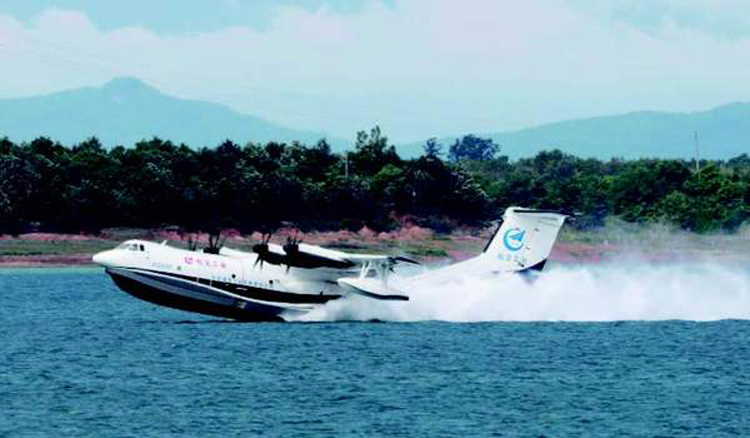
The bidders are to respond to the RFI by October 20, 2021, and are expected to obtain a technology transfer and design from a foreign vendor but strictly adhering to the Indigenous Content requirements, as per the latest procurement procedures. Specifications and capabilities of the LPDs are required as under:
- Maximum length of 200 meters and maximum draught of 8 meters.
- Powered by electric propulsion sustaining speed of 20 knots or above, cruise at 14-16 knots and provide logistical support to troops for 60 days.
- 32 Vertical Launch Short Range Surface to Air Missile (VLSRSAM) and 16 ship-launched anti-ship missiles.
- Four AK-630 CIWS guns with Electro-Optical Fire Control System, 6 heavy machine guns with stabilised gun control stations, 8 medium machine guns, and Directed Energy Weapons in lieu of AK-630s when developed.
- Four chaff launching systems for counter-measures also incorporating 3 x Long-Range Acoustic Devices.
- 10,000 nautical miles endurance at economical speed with 25 per cent reserve fuel and ability to stay in waters for minimum 45 days in terms of machinery and fuel.
- 530 crew including 60 officers, 470 sailors, and carry 900 troops - facilities for 20 per cent women officers and 15 per cent women sailors.
- Through Deck design accommodating at least two Heavy Lift Helicopters, 12 Special Operations Helicopters and two Naval Shipborne Unmanned Aerial Systems (NSUAS).
- Hangar capacity for two Special Ops Helicopters and two NSUASs.
- Well dock should be able to operate at speeds of upto five knots, and ballasting/de-ballasting arrangements suitable for launch and recovery operation in short time up to Sea State Three.
- One or more vehicle decks with a minimum area of 2,000 sq. m. for parking combat vehicles to accommodate 6 x MBTs, 20 AAVs/BMP Class armoured vehicles and around 60 heavy trucks at the same time.
- Total cargo space of about 1000 sq. m. and warehouse stowage of around 400 standard marine pallets.
- Act as Command Centre for the Commander, Amphibious Task Force, Landing Force Commander and the Air Force Commander and also undertake Humanitarian Assistance and Disaster Relief (HADR) missions.
- Act as mother ship for unmanned capability and to support operation/ exploitation of all dimensions of futuristic unmanned vehicles/platforms/equipment.
- Provide medical facilities for treatment of battle casualties.
Hopefully, the Navy will acquire this amphibious capability in the above timeframe and there are no further hiccups and stonewalling. The issue of procuring amphibious aircraft from Japan and other sources, which was under active discussion in recent years appears to have died. Similarly, the Navy’s proposal to a have a marine brigade too lies buried in the MoD since two decades plus.




